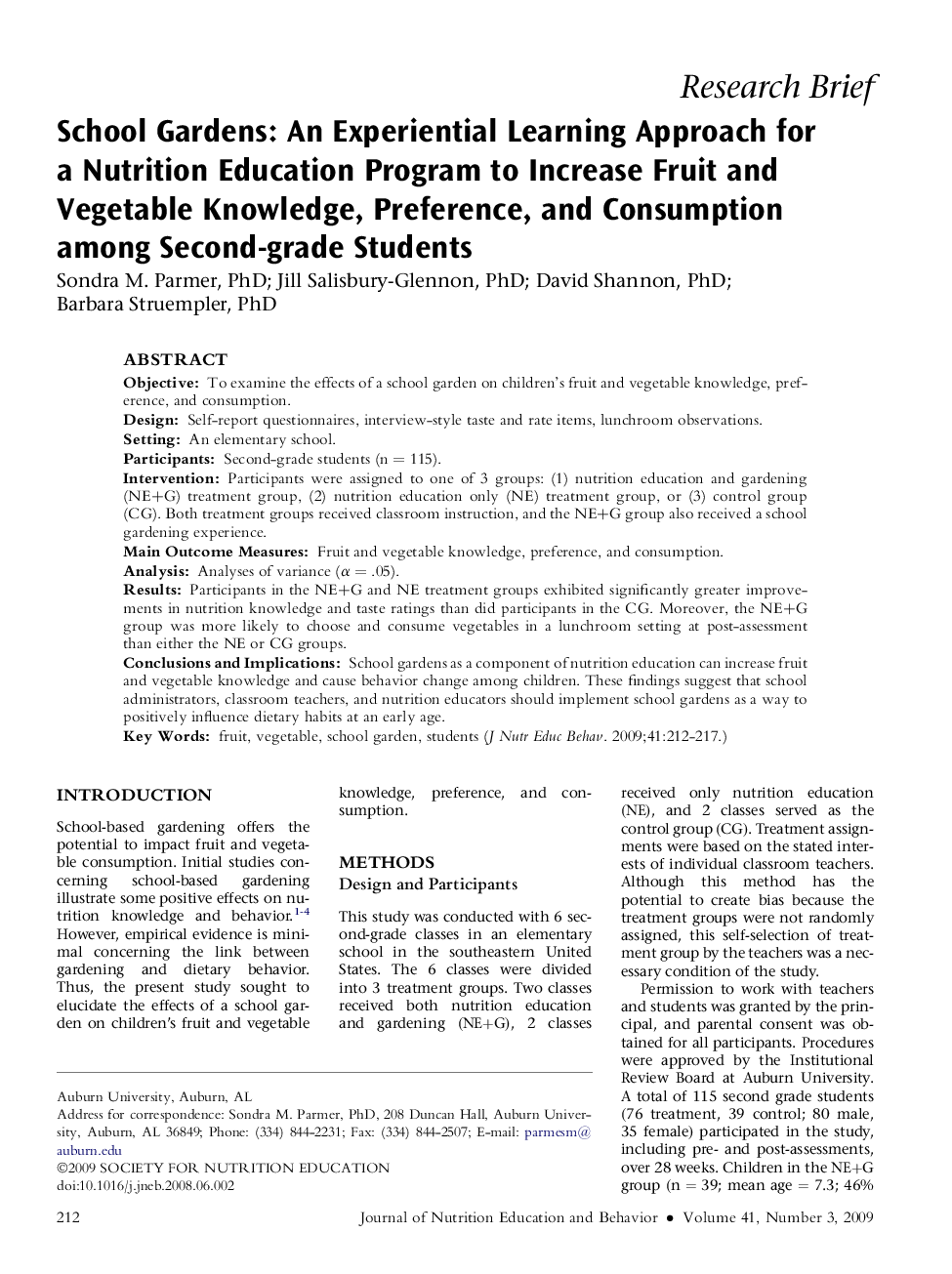| Article ID | Journal | Published Year | Pages | File Type |
|---|---|---|---|---|
| 363157 | Journal of Nutrition Education and Behavior | 2009 | 6 Pages |
ObjectiveTo examine the effects of a school garden on children's fruit and vegetable knowledge, preference, and consumption.DesignSelf-report questionnaires, interview-style taste and rate items, lunchroom observations.SettingAn elementary school.ParticipantsSecond-grade students (n = 115).InterventionParticipants were assigned to one of 3 groups: (1) nutrition education and gardening (NE+G) treatment group, (2) nutrition education only (NE) treatment group, or (3) control group (CG). Both treatment groups received classroom instruction, and the NE+G group also received a school gardening experience.Main Outcome MeasuresFruit and vegetable knowledge, preference, and consumption.AnalysisAnalyses of variance (α = .05).ResultsParticipants in the NE+G and NE treatment groups exhibited significantly greater improvements in nutrition knowledge and taste ratings than did participants in the CG. Moreover, the NE+G group was more likely to choose and consume vegetables in a lunchroom setting at post-assessment than either the NE or CG groups.Conclusions and ImplicationsSchool gardens as a component of nutrition education can increase fruit and vegetable knowledge and cause behavior change among children. These findings suggest that school administrators, classroom teachers, and nutrition educators should implement school gardens as a way to positively influence dietary habits at an early age.
